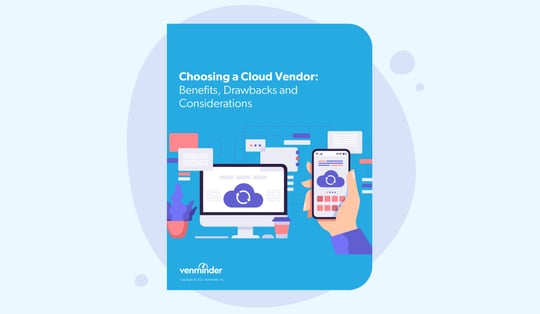The business world shifted dramatically since the beginning of the COVID-19 pandemic. Millions of employees began working remotely and organizations across the world became increasingly reliant on cloud technology. Whether your organization already utilizes cloud vendors, or you’re in the process of choosing a new provider, there are several factors you’ll need to consider. This blog will cover some of the basics to help you gain a better understanding of how to evaluate a cloud vendor.
General Information Needed to Evaluate a Cloud Vendor
There are many complex elements that you’ll need to evaluate for a cloud vendor, such as its security policies, business continuity and disaster recovery plans, and financial health, to name a few. However, it’s always a good idea to begin with the following basics:
- Qualifications – You’ll want to ensure that the cloud vendor has the technical expertise and business knowledge to meet your unique needs.
- Third-party risk management – Just as your organization puts in the time and effort to manage third-party risk, the same should be done by your cloud vendors. Any provider that you partner with should have a robust third-party risk management program in place to evaluate its own service providers.
- Service level agreements – Your cloud vendors should provide basic service level guarantees to your organization.
- Billing – Confirm that the vendor provides automated accounting, which allows you to monitor the costs associated with your cloud vendor and avoid any unexpected bills. You should also be aware of how the vendor handles any billing issues.
- Ease of use – Consider whether the vendor’s product is user-friendly when it comes to deployment, management, and upgrades.
- Interface – The vendor’s application programming interfaces (APIs) and data transformations should be standard. This allows your organization to create connections to the cloud.

3 Tips for Using Cloud Vendors
Cloud technology is appealing for many organizations as it often provides high speed, mobility, and cost savings in comparison to non-cloud-based service providers. If your organization decides to partner with a cloud vendor, keep these three tips in mind:
- Create a shared responsibility matrix – Depending on the type of service, you and your vendor may share the responsibility of managing the cloud. A shared responsibility matrix will help define the roles of each party.
- Understand the benefits and drawbacks – Cloud vendors come in a variety of options, so the benefits and drawbacks will be different for each provider. Make sure your organization has identified its unique needs so you can better understand whether a vendor will be beneficial or not.
- Identify the risks – Every third-party vendor, cloud-based or not, will expose your organization to some level of risk. It’s essential to follow your internal third-party risk management processes to identify and mitigate the risks from your cloud vendors.
There’s a lot to know about cloud vendors. The information covered here can be used as a starting point for further research and learning. Cloud technology is likely here to stay, so it’s worthwhile to educate yourself on how to properly assess these types of vendors.












